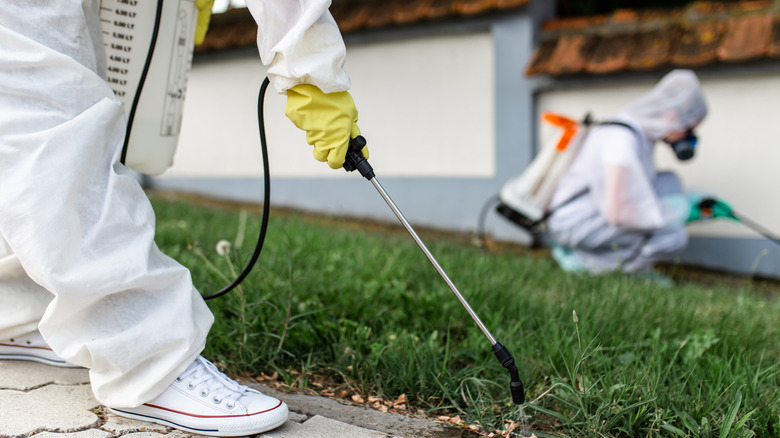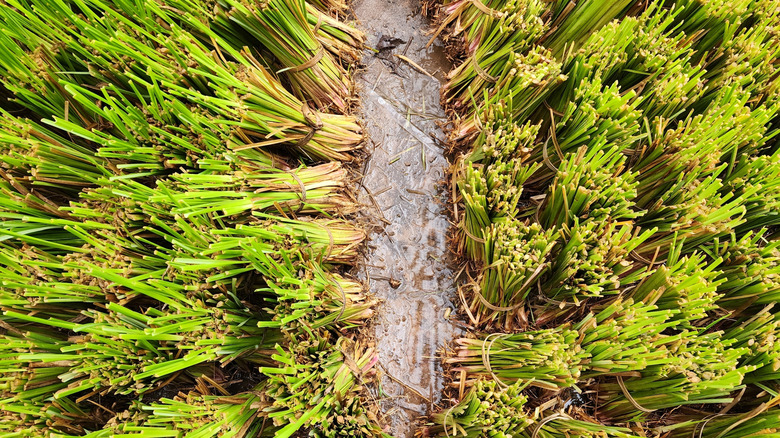The Non-Invasive Plant That Helps Keep Termites Away From Your Garden
If you've spotted chewed mulch, weakened wooden borders, or mysterious mounds of soil in your garden, you may be dealing with a termite infestation. The noticeable signs of termites are hard to ignore, especially when they affect the growth of your plants. While professional extermination is often necessary for major termite populations, there is a low-effort, natural way to deter these pests from settling in the first place — and it comes in the form of a hardy, ornamental plant. Vetiver grass (Chrysopogon zizanioides) might look like another landscaping filler, but its system of expansive roots works surprisingly well at suppressing termite numbers. It is a non-invasive, easy to manage solution that will not take over your garden.
So, what makes vetiver grass such an effective natural termite repellent? It all comes down to the roots. The plant produces compounds that are toxic to termites, specifically nootkatone. This compound is present in the expansive root system that can reach about 9 feet down. Nootkatone is known to either deter or kill termites on contact, preventing them from entering your garden in the first place. When you plant vetiver grass on walkways, around garden borders, or even around your home, you are creating a below ground defense system that deters hungry pests. Additionally, it is one of the best plants for combating soil erosion around your yard that leaves it looking refreshed and pretty. Unlike more aggressive grasses, vetiver grows in neat clumps and typically stays where you plant it.
Growing natural termite repellents
Vetiver grass is a low-maintenance addition to your backyard or garden. Start by choosing a well-draining, sunny spot around your home. The plant thrives in moist soil and can tolerate many soil types, though it may struggle to grow in heavier clays. It is also drought-tolerant, meaning it can survive sustained periods without watering. Vetiver grass can handle colder temperatures for short periods of time, but its growth may be limited by frost. You should water your plant every 10 days during dry seasons to encourage growth and the development of deep roots, which are important for deterring termites. In other seasons, water when you notice that the soil has dried out. If you are planting rows of vetiver grass around your home, leave about 3 to 4 inches between each plant, but deeper roots may need around 6 inches to spread out.
If you are looking to expand your natural pest-repellent arsenal, consider introducing a few other plant species. Mint and lemongrass are known as termite and pest deterrents. Mint contains strong, aromatic oils that can confuse or repel termites around your yard. However, mint is known to spread quickly if left unchecked, so you may want to plant it in containers or confined beds to limit growth. Lemongrass is like vetiver grass. It contains citronella, which works to keep mosquitoes and other pests away from your home. Lemongrass grows in tiny clumps and can add a subtle citrus smell to your garden. With a planting strategy, you can protect your garden and home from termites while enjoying lush, vibrant greenery.

